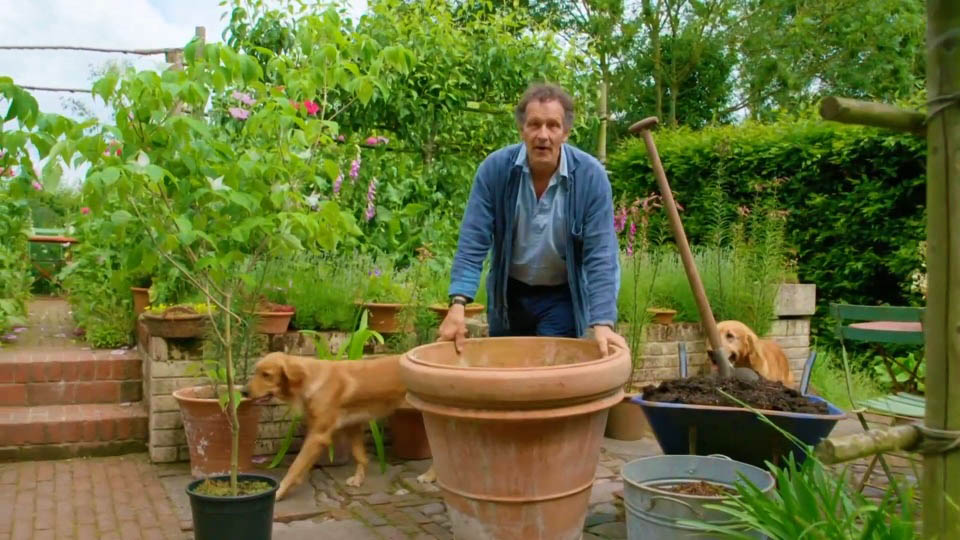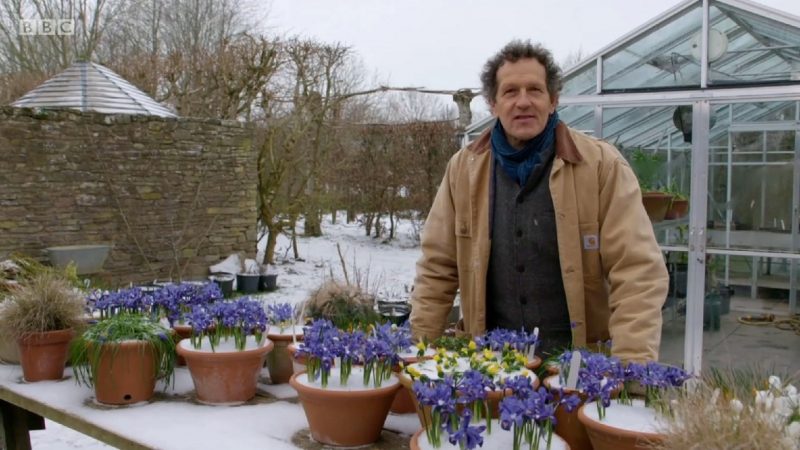At Longmeadow Monty celebrates the midsummer glory of roses in all their forms, plants some statuesque shrubs in pots for year-round interest, and deals with a pesky rabbit problem in the veg patch.
Carol Klein revels in one of our most flamboyant seasonal flowers – the peony. Adam Frost finds inspiration for his own garden from the wild flowers that grow near to his Lincolnshire home, and Arit Anderson takes a look into gardens of the future when she visits a garden in Derbyshire designed to capture and use rainwater.
Flo Headlam gets involved with a community project that can totally transform a garden in a single day, and we visit an iris enthusiast in Gloucestershire who is attempting to collect all the varieties created by one of her ancestors.
In Gardeners World 2018 episode 13:
Xylella: More information
Biosecurity is a really important issue which we should all be aware of. The main thing is to be mindful of where you source plants from. Experts describe Xylella fastidiosa as one of the most dangerous pathogens worldwide. The RHS is calling on gardeners and the industry to future proof gardens by buying host plants that are propagated from seed in the UK or grown in the UK for a minimum of 12 months.
Planting containers

Containers filled with seasonal or permanent plants are extremely versatile. They can brighten up a corner of the garden, provide handy herbs by the kitchen or make the entrance look welcoming. Yet, life in containers can be tough for plants, so choose the right compost and carry out regular maintenance to ensure they put on a good show.
Herbaceous peonies
Herbaceous peonies provide invaluable colour to borders and cut flower material in late spring and early summer. Their large, often double flowers in whites, pinks and reds add an element of romance and glamour to any garden.
How to grow peas
There’s nothing like the flavour of freshly picked peas. Use them as quickly as possible once picked as they lose their sweetness. Dwarf varieties of peas don’t need much in the way of support. The easiest types to grow are mangetout and sugar snap varieties.
For best results peas need an open, sunny position with good drainage. Never sow in cold, wet soil; acidic soils should be limed. If spring is slow to arrive, warm the soil with polythene before sowing and then protect seedlings with horticultural fleece. Generally, peas prefer cooler weather and grow well in cool springs. Make a flat-bottomed trench 5cm (2in) deep and 15cm (6in) wide – a draw hoe is ideal for this. Sow the seeds evenly in the trench approximately 7.5cm (3in) apart, cover with soil, then lightly firm. If you need a second row make this the height of the crop away from the first trench.




